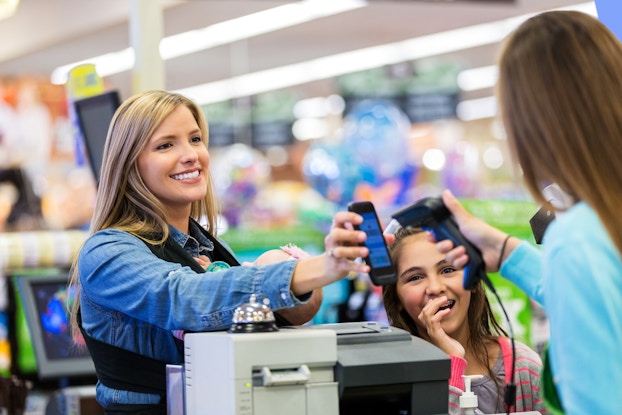As you approach setting up a customer loyalty program, there are many questions to consider. What behavior are you hoping to encourage? How will you reward your loyal customers? How will you encourage customers to join your program?
Most loyalty programs try to encourage customers to:
- Spend more.
- Spend more often.
- Share their information.
Whether you choose to use your loyalty program for market research or to encourage higher sales, here are a few ideas to help you set up a customer loyalty program that delivers value for your customers and your business.
[Read more: How to Create a Customer Loyalty Program for Your Business]


Hand out punch cards
Punch cards are the most low-tech, straightforward ways to encourage customer loyalty. Getting started is as easy as offering a stack of cards by the cash register and stamping or punching a customer’s card each time they purchase. This style program can incentivize frequent visits by offering a freebie after a certain number of stamps. However, the downside is that punch cards are easy to lose — and your business won’t be able to collect any meaningful customer data in the process.
[Read more: The Changing Playbook for Winning Customer Loyalty All Marketers Should Know]
Gamify collecting points
Points-based loyalty programs are among the most common ways to increase customer loyalty, with examples from brands like Starbucks and Sephora proving their value. In this structure, you reward customers based on their spending behavior. You can set rewards on different tiers based on how much a customer spends, or encourage customers to try new products by offering points for different activities.
Points programs are more complicated to set up than a punch card system, but the gamification element makes it worthwhile. Many customers like the challenge of collecting points; you may even create a leaderboard to spur healthy competition among your regular customers. Just reaching the next tier of rewards can be a thrill in itself.
Research shows that referred customers are 18% more loyal, have a 16% higher lifetime value, and bring a 13.2% higher spending rate than non-referred shoppers.
Reward referrals
Don’t limit yourself to simply rewarding a sale. Consider turning your best customers into your best marketers.
“One way you can introduce a referral program is through custom links that are tied to customer accounts,” wrote Meaghan Brophy in FitSmallBusiness. “Customers can copy the custom link on their account and share it with friends, then you can track and reward that customer based on the actions that happen on that link.”
This dynamic creates a win-win-win. Your customer gets rewarded for bringing in business. A new customer benefits from your products or services. And your business earns a customer with high lifetime value. Research shows that referred customers are 18% more loyal, have a 16% higher lifetime value, and bring a 13.2% higher spending rate than non-referred shoppers.
Offer exclusive deals
Loyalty program members should feel like they’re getting red carpet treatment. One way to do that is to offer exclusive deals to members. You can do this by creating VIP perks for certain tiers, or by simply offering promos to those who have signed up for your rewards program.
This is also a great way to conduct market research. “By introducing a VIP membership program, customers can subscribe to your company’s email or SMS in exchange for better product selection or ease of use,” wrote HubSpot. “Not only will they be more interested in your new offerings, but they’ll get notifications each time they check their email or phone messages.”
A VIP program gives you a way to test different products or experiences before launching them to the wider market. You can see how your best customers react, collect feedback, test different marketing messages, and generally make sure you are on the right track in growing your business.
Make it mission-based
Today’s customer isn’t just interested in price. They want to know about your company’s mission, commitment to DE&I, and sustainability. Two-thirds of customers say they are more willing to spend money with brands that take stances on social and political issues that they care about.
If you aren’t sure you can afford to give promos and free products, tie your loyalty program to a cause your customers care about. For example, TOMS Shoes donates a pair of shoes for every purchase its customers make. You could offer to plant a tree each time a loyalty member joins the highest tier, or give a portion of loyalty sales to a conservation organization. Think outside the box to find something that will make a difference to your customers and your community.
CO— aims to bring you inspiration from leading respected experts. However, before making any business decision, you should consult a professional who can advise you based on your individual situation.
Follow us on Instagram for more expert tips & business owners’ stories.
CO—is committed to helping you start, run and grow your small business. Learn more about the benefits of small business membership in the U.S. Chamber of Commerce, here.








